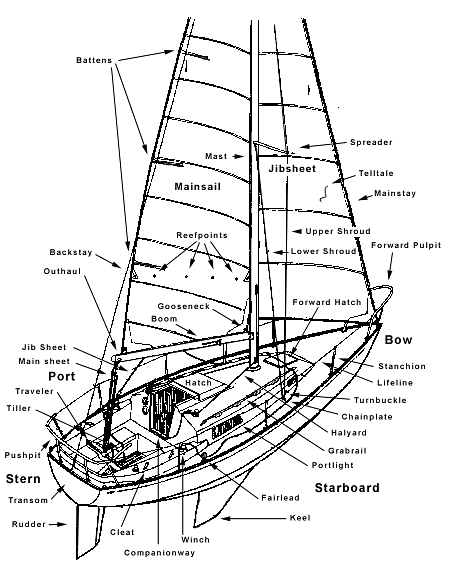The Learning Curve
/Some folks have been sailing their whole lives. As kids, they learned basic sailing skills and the rules of boating safety and felt comfortable on sailboats. Not us … we learned most everything we know since we were in our mid-40's. That's a significant amount of information for these old minds to absorb and hopefully maintain. We're living proof that it's possible, but the learning curve is definitely steep.
There's so much to learn. Nothing on a boat has a name even remotely similar to the same things on land. It's the galley...not the kitchen. The saloon...not the dining area. The head...not the bathroom. Closets are lockers. The couch is a settee. The floor is the sole. The ceiling is the header and the stairs are always called the ladder. A window is a portlight, unless it opens, then it's a porthole. There's rigging (standing and running) ... port and starboard...forward and aft and midships ... bow and stern. It's never-ending. That's the easy part.
There's the gear we use...VHF (very high frequency) radio for communicating with other sailors and folks on land who also have VHFs; the GPS (global positioning system) which tells us where we are and gives us a heading and bearing for where we want to go. There's the SSB (single side band) radio for long distance communication and email and the AIS (Automatic Identification System) which lets us know who's near us out there in the big ocean. The chartplotter, radar, the watermaker, the voltage monitor, depth monitor, speedometer (over land as well as through the water), anemometer, barometer, wind generators, solar panels … the list goes on and on. Learning how to use all this gear is key to safety and comfort aboard, but whew! It's exhausting if it's all new.
Let's add to the mix a diesel engine; a 12V electrical system; marine plumbing, hydraulic steering, autopilot and refrigeration; varnishing, fiberglass repair and maintenance, sail configurations and maintenance. The list of required competencies just goes on and on just to maintain the boat and keep it afloat. Oh, yeah, and then there's actually sailing the boat, mooring, anchoring, weathering storms. Okay, okay … you get the picture. Take a breath!
How do aspiring sailors learn it all? It takes time, patience, perseverance and a little bit of courage. The learning never ends. We took classes on sailing, navigation, charting, weather forecasting and healthcare at sea. We chartered sailboats and got a feel for the live-aboard life, although nothing prepares you for the real thing. We learned lots of ancillary things, too. We got our HAM licenses for radio operation. We learned to SCUBA and got certified. We took refresher courses in first aid. We learned about currents, tides, stars and marine life. We bought tons of books on everything from carving to canning … electrical systems to shell identification. We read, studied, learned, tried. We joined SSCA, went to gams and seminars and started asking questions of more experienced sailors who were patiently willing to chat with “newbies” and give informative answers. Mostly, you just have to be willing to try things, be adaptable and very innovative.
The learning curve is definitely steep and we made and continue to make mistakes; we continue to learn . But, oh man, the rewards of a liveaboard, cruising life are out of this world.



